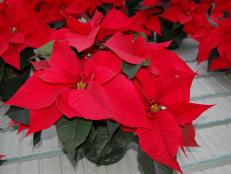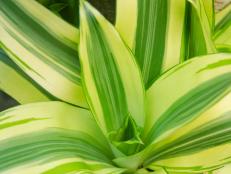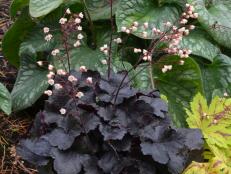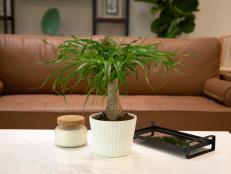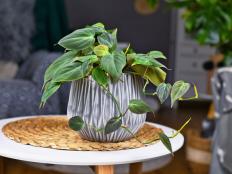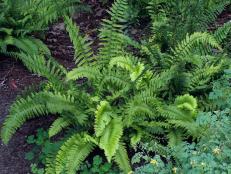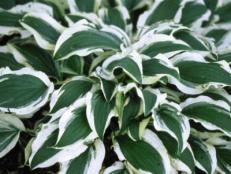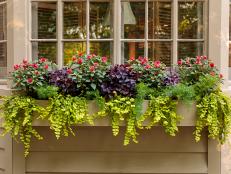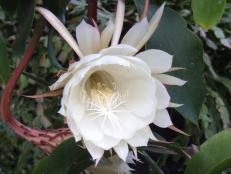Plant and Grow Poinsettias in Your Garden

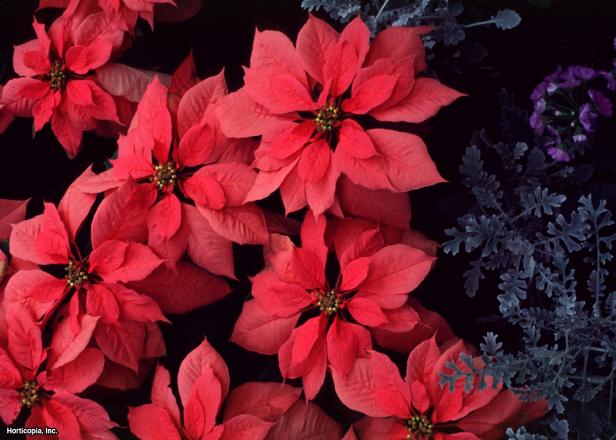
Poinsettias aren’t popular only at Christmas time. With the right care, these traditional holiday plants can shed their shiny foil and bows to become long-lasting houseplants.
You can also grow them outdoors in your garden if you live in a frost-free area. Native to tropical parts of Mexico and Central America, poinsettias (Euphorbia pulcherrima) are showy perennials that are hardy in zones 9 to 11, and they’re surprisingly easy to grow.
If your poinsettia is growing in a pot when you get it, keep it indoors in a sunny room where the temperatures range from 65 to 80 degrees F. during the day, and no lower than about 60 degrees F. at night. Avoid putting it near air vents, doors and windows, as hot and cold drafts will cause the foliage to drop.
When you water, remove any decorative foil on your plant and let the excess drain out, or cut slits in the foil and use a saucer underneath to catch the overflow. Empty the saucer so the roots don’t stand in water. After your poinsettia drops its leaves, cut the stems back to 4 to 6 inches high and let it go somewhat dry between waterings.
Wait until the outdoor temperatures at night are consistently 55 degrees F or above before you transplant it into the garden. Then give it a spot in full sun with good drainage where the soil has been amended with organic matter. Poinsettias can tolerate some shade, although their branches will grow longer and rangier-looking. Water regularly, if needed, and feed with a complete fertilizer when new growth appears. Always water after you fertilize.
Poinsettias can grow into small, scraggly trees in their native environment, reaching 10 to 15 feet tall, but you can control their size by pinching them back. Start pinching the growing tips in summer and stop about mid-August.
If your poinsettia is going to be a permanent resident in your garden, and you want it change colors in time for Christmas, plant it in a spot that stays completely dark for about 12-14 hours every night starting in early October. Poinsettias need this prolonged period of darkness to rebloom. They’re short-day plants, which mean that decreasing amounts of daylight stimulate their color change.
(Although we refer to the colorful parts of poinsettias as the flowers, those are actually modified leaves, or bracts. The true flowers are the small, yellow buds in the center of the bracts.)
If you don’t have a dark garden spot, cover your plant with a box or some sort of light-blocking material. Any light, even from a street or security light, can affect flowering while the buds are forming. Outdoor temperatures that stay above 70 degrees F. or drop below 60 degrees at this time can also affect poinsettia color—but there’s not much you can do about the weather.
You may have better luck with getting good color if your poinsettia is small enough to dig up and bring inside for the winter. Try putting in a closet or other completely dark room and again, block all light from reaching it for 12 to 14 hours at a time, starting around October 1.
If you leave your poinsettia in the garden, and it’s hit by an unexpected frost, cut it to 12 to 18 inches above the ground early the following spring, or prune it back until you reach live wood. Then start the care cycle over again. With a little luck and effort, you’ll have flowers by the next holiday to brighten your home or garden.






